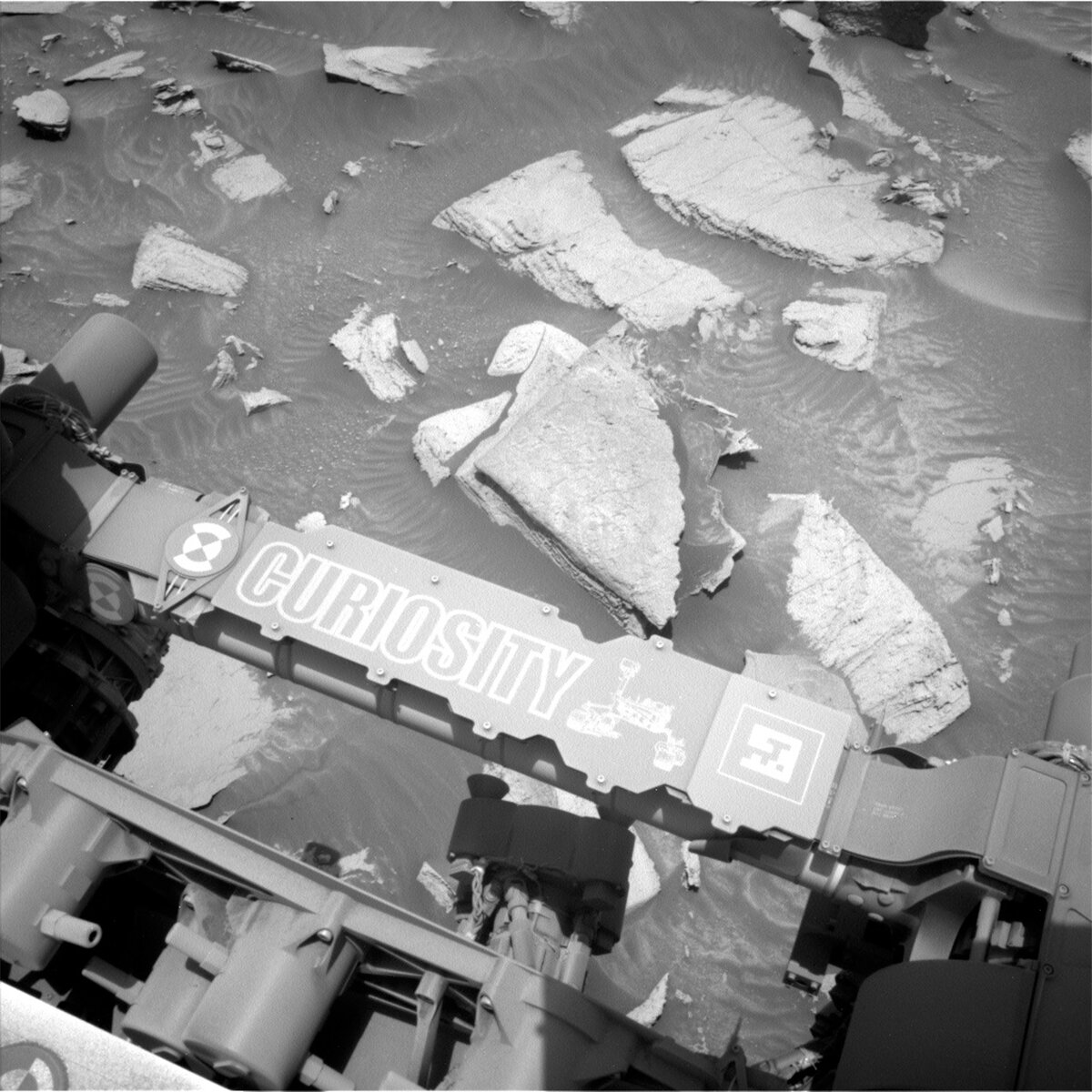2 min read

Earth planning date: Monday, January 8, 2024
With a successful bump backwards over the weekend, Curiosity is now positioned to execute contact science on a flat block of dark-toned bedrock in its workspace and continue investigating the composition and texture of the dark bands we’ve been observing from orbit. Our two-sol plan starts with a DAN passive, followed by brushing of the contact science target "Chagoopa" and a brief APXS integration on the target. Up next, we have our morning science block with ChemCam observations of "Chagoopa," target "Painted Lady" (an outcrop of fractured bedrock with an interesting polygonal texture), and a long-distance RMI of Milestone Peak (a deposit with large boulders). Mastcam has planned observations of "Chagoopa," "Saddlerock Lake" (an exposed truncation surface with a possible ventifact), and "Rock Creek" (fractured rock), as well as an AEGIS activity. Mastcam will then image the Dust Removal Tool, and MAHLI will acquire imagery of "Chagoopa" from 25 cm, 5 cm, and 2 cm away.
After the morning science block, Curiosity will drive about 16 m to some polygonal fractured material, and MARDI will perform a video activity to document the fractures. Following this, we have post-drive imaging to assist the Rover Planners, identify targets for the next plan, and systematically document clasts and soils along the traverse. MARDI will acquire a single image at twilight to close out the first sol of this plan.
The second sol begins with another DAN passive and an untargeted science block in the morning. This science block includes ChemCam AEGIS of bedrock, a Navcam line-of-sight observation, and a Navcam dust devil movie. The planned contact science observations of the dark-toned bedrock target in our workspace will inform a decision on potentially drilling the rocks in this region again or not.
Written by Abigail Knight, Graduate Student at Washington University







